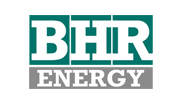The existing process consists of the following steps: Firstly the high polluting materials and the inert materials are separated: - Ferrous and non ferrous metals. - Stones, porcelain, ceramics, etc. - Dangerous waste due to their composition: High contents of chlorine, arsenic, mercury, etc. In the second phase the humidity of the selected materials is reduced. In the third phase the size of the materials is reduced, obtaining SRF.
Production of an exclusive homogeneous fuel.
-High calorific value.
Clasification as per European Standard CEN/CT 343.
-Minimum humidity content, which results in a high efficiency.
-Waterproof properties.
-Low content in ashes.
-Content in chlorine LESS THAN1.0% and sulphur below 0.5%
-High Density 1,300/2,000 kg/m3
-All compulsory requirements of European Directive 2008/98/CE are complied with. Compliant also with Spanish Law 22/2011 of the 28th July (Article 5) which establishes the conditions under which the SRF is no longer considered waste, it is considered a new product.
The physical chemical process breaks up the molecules of the substances that make up the different materials, rearranging them differently into processed products.
A new product is obtained formed by the recombined molecules of the different materials and products processed..The obtained product has physical and chemical properties which are programmable, ideal to be considered an alternative fuel under European Standard CEN/CT343.










